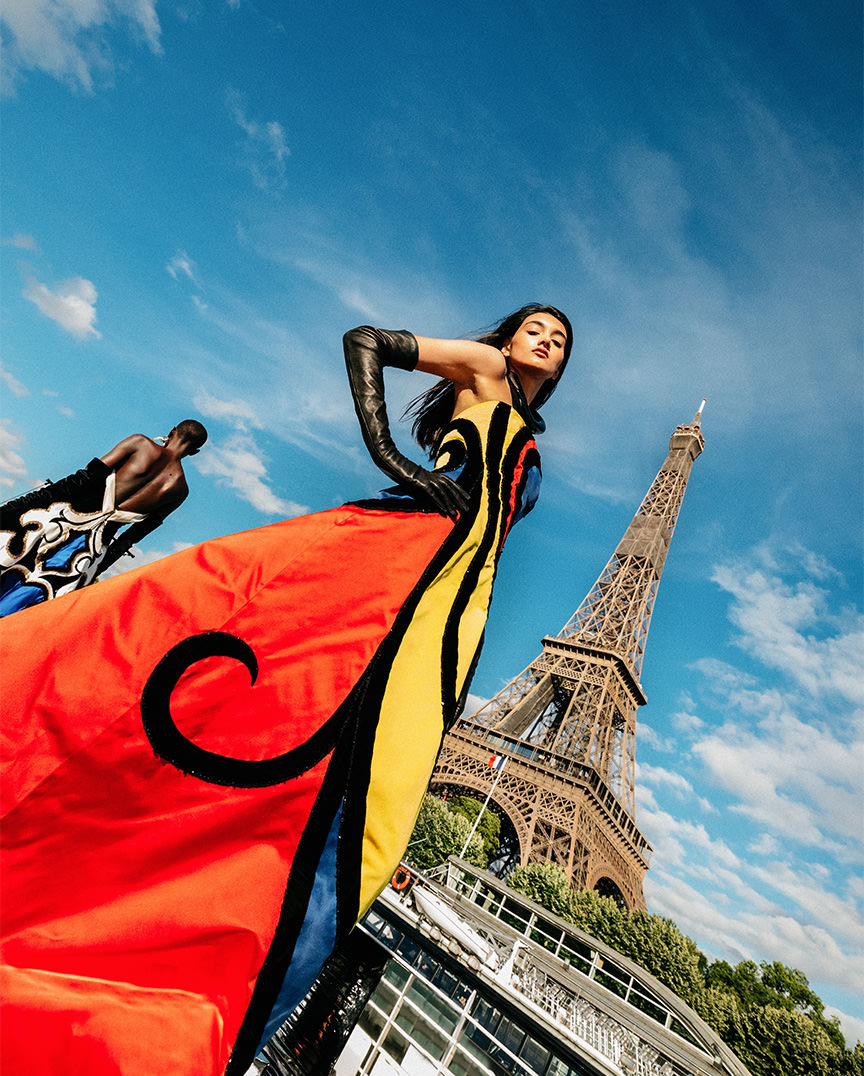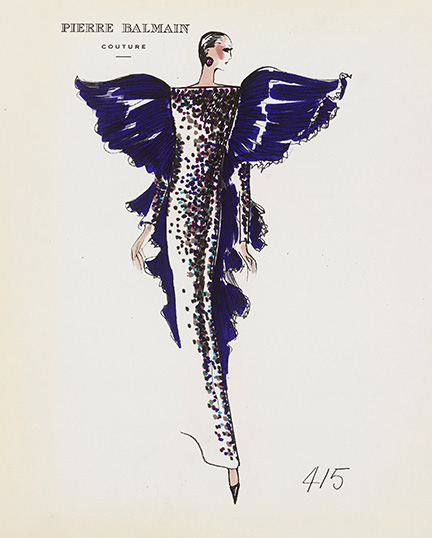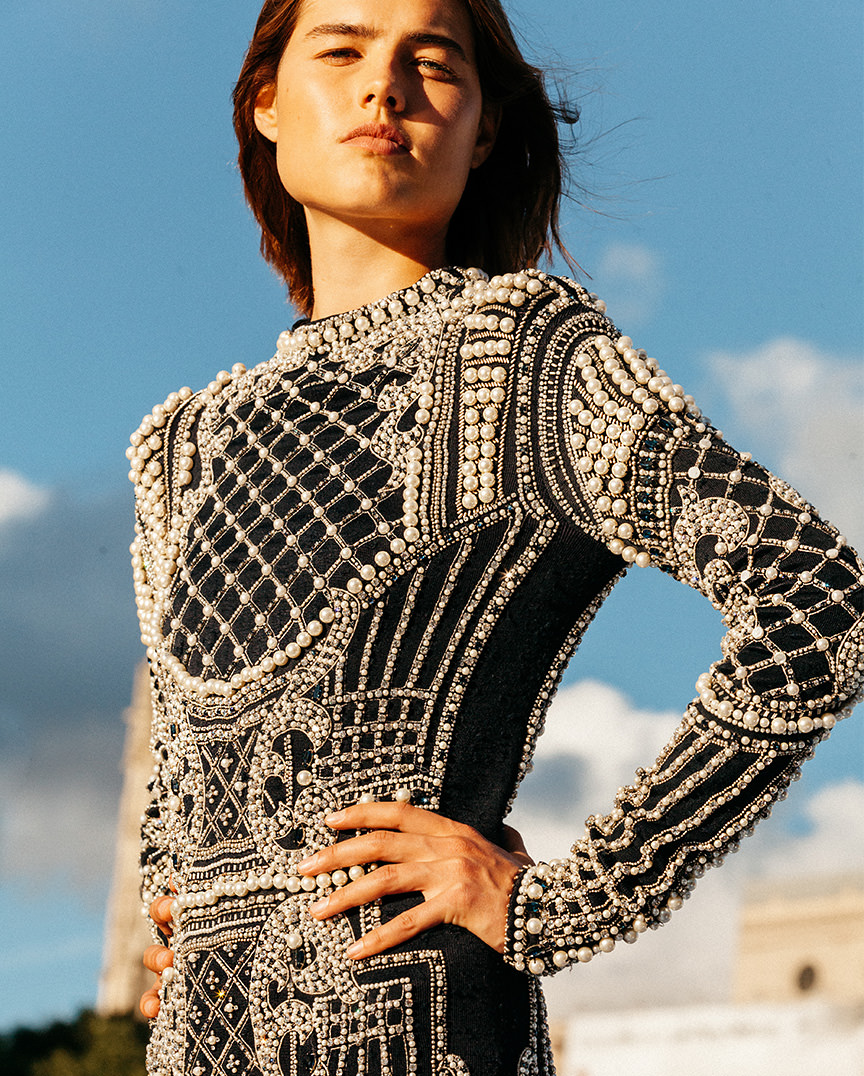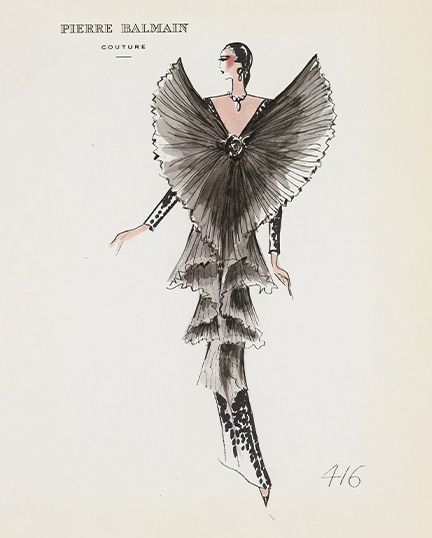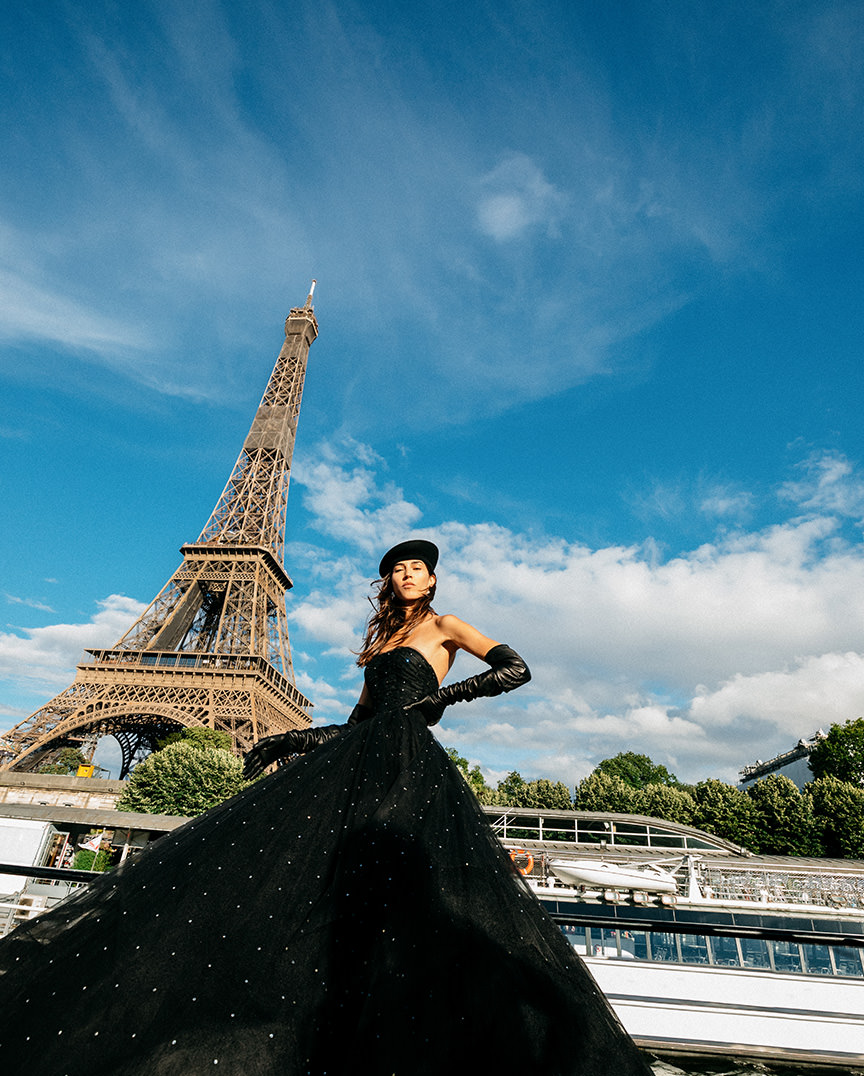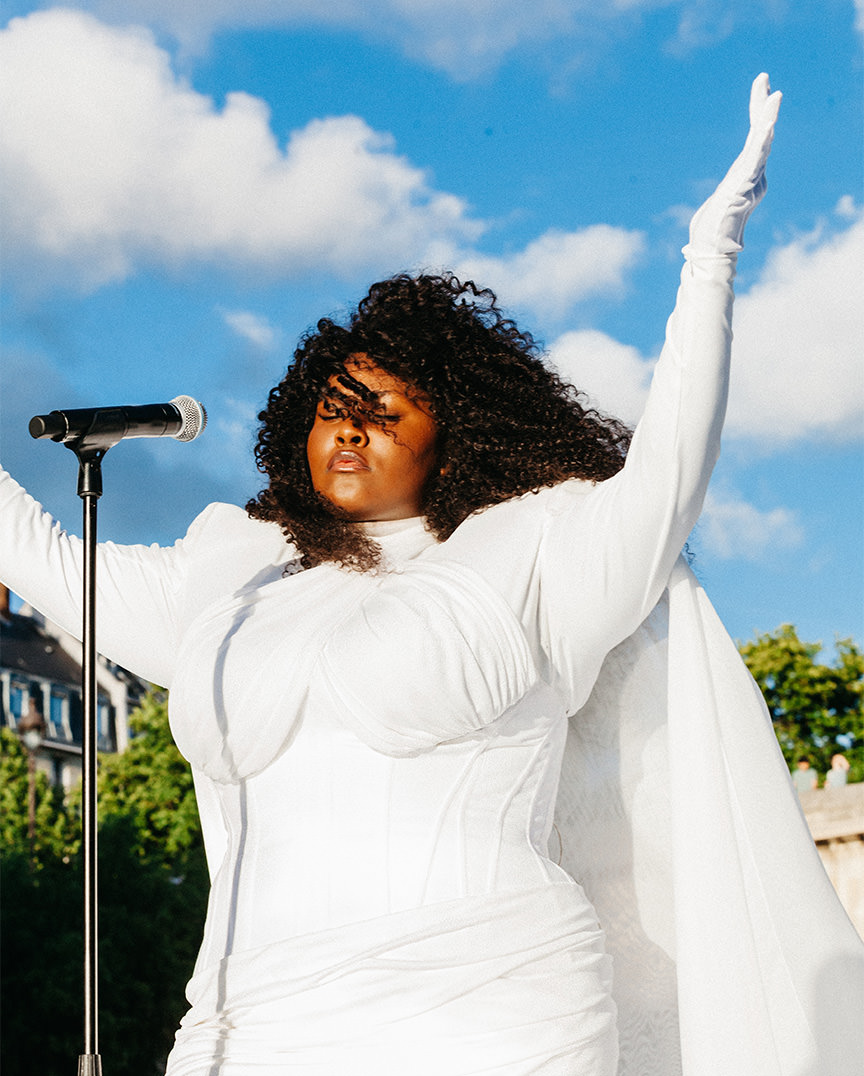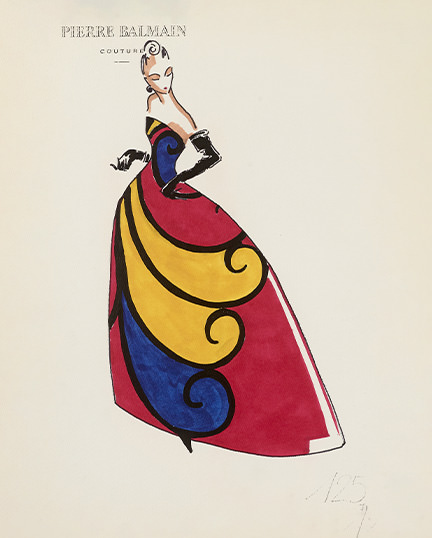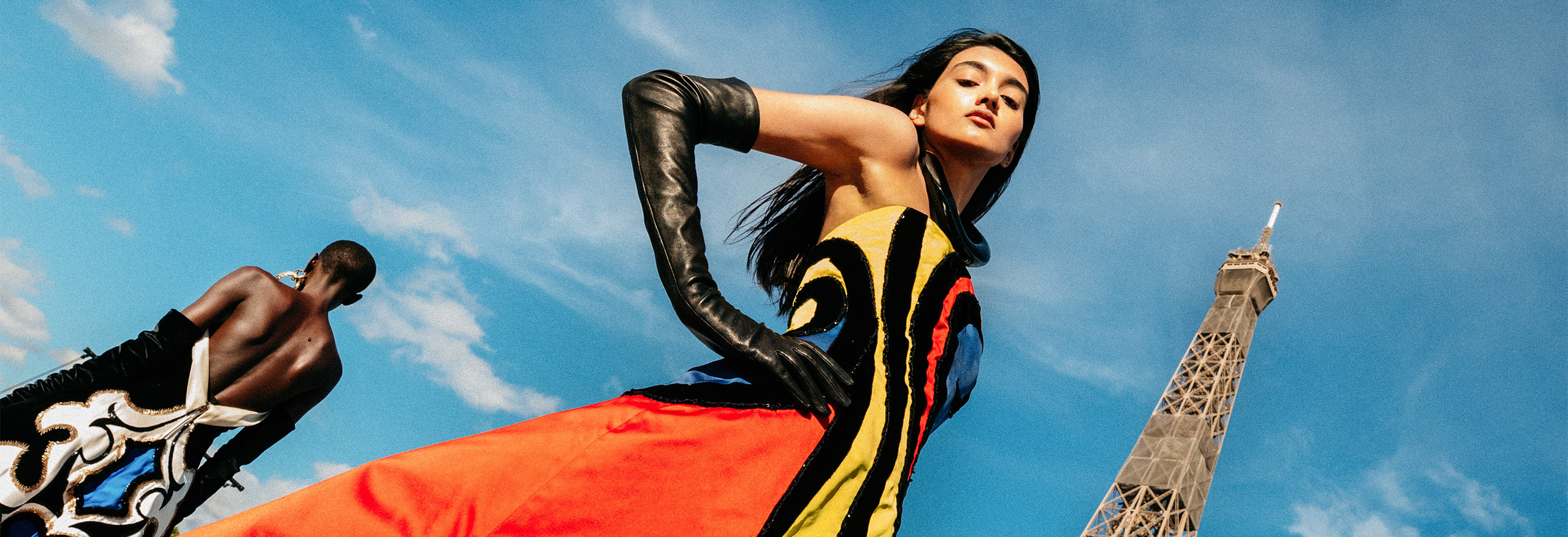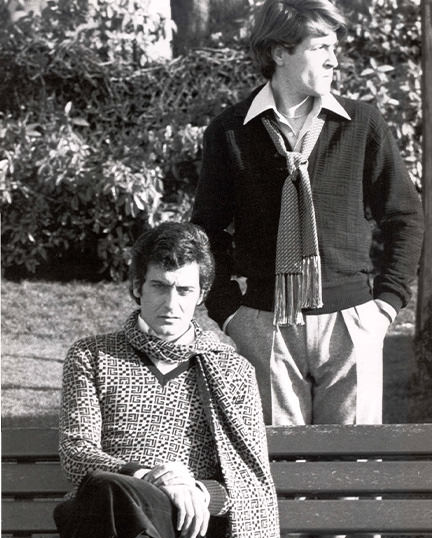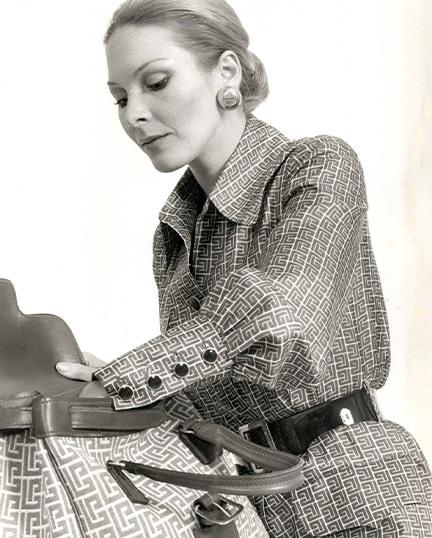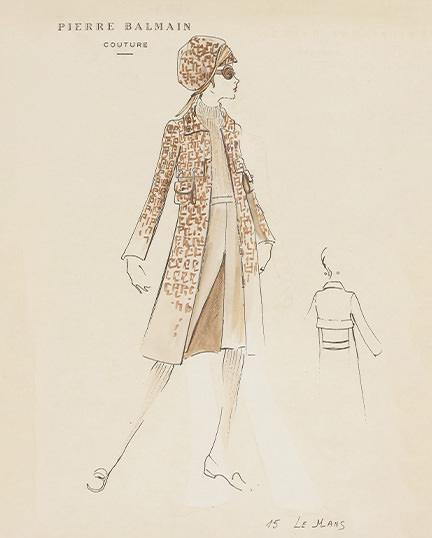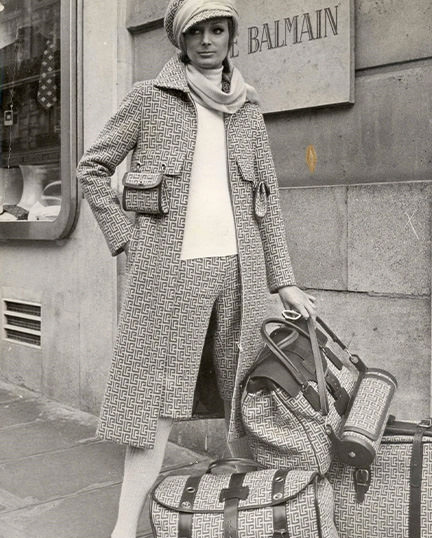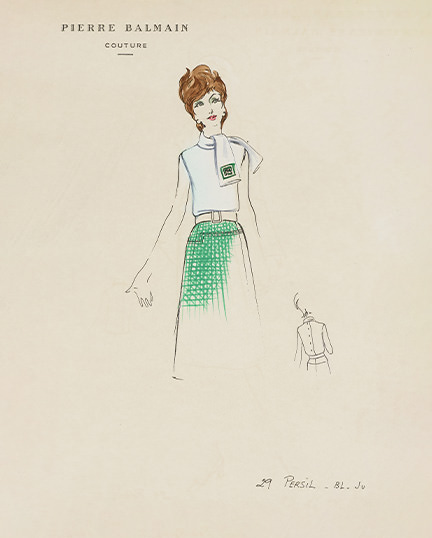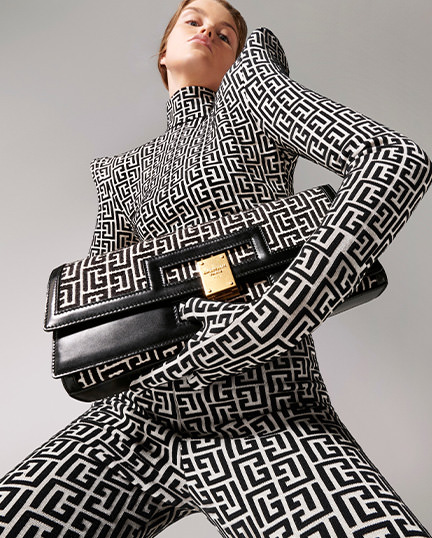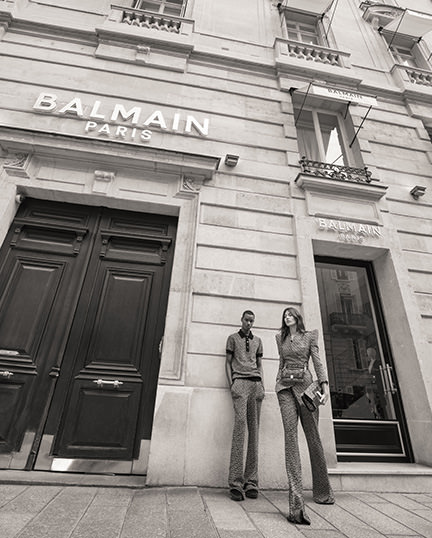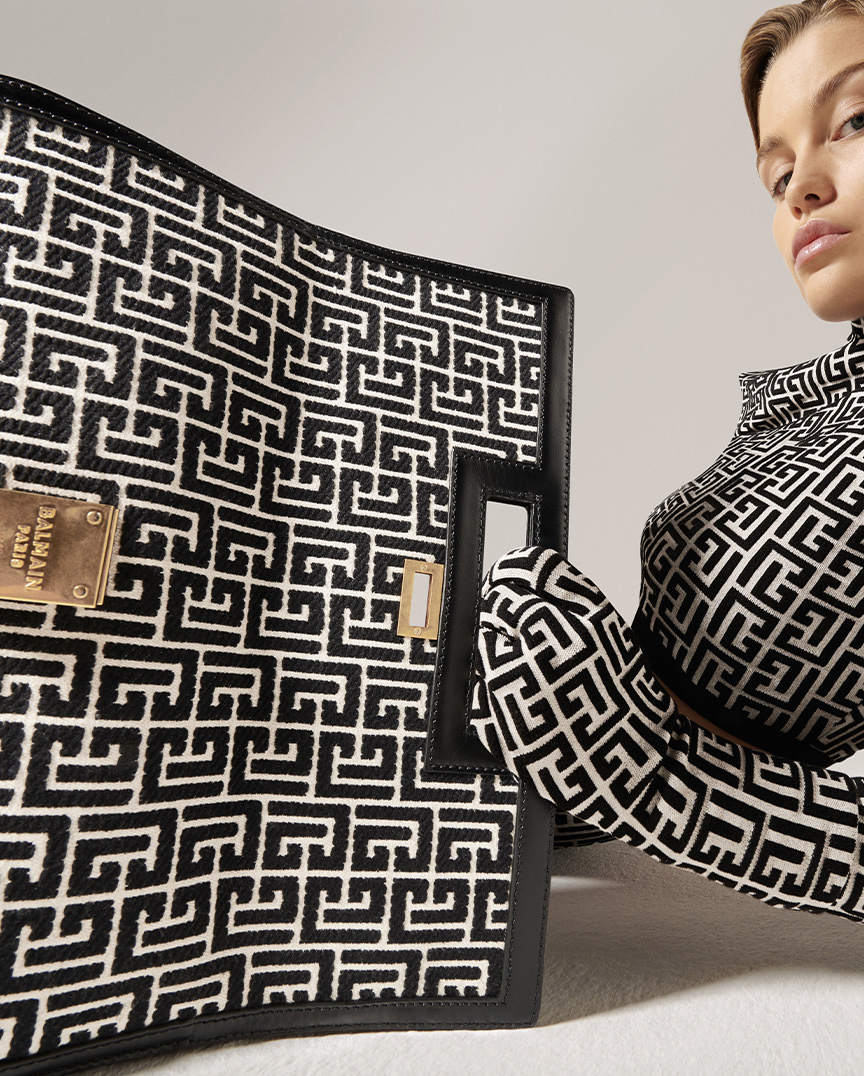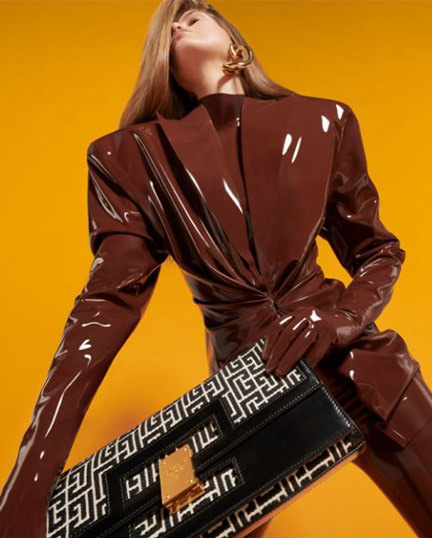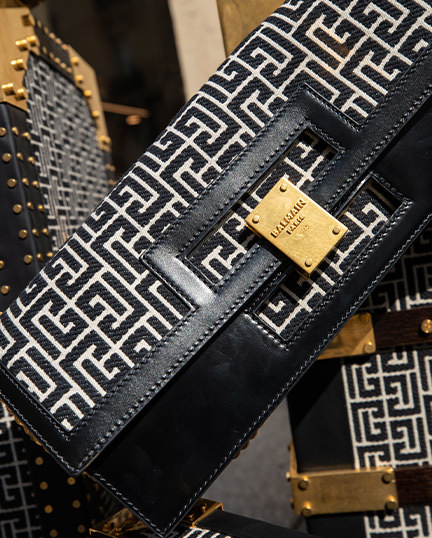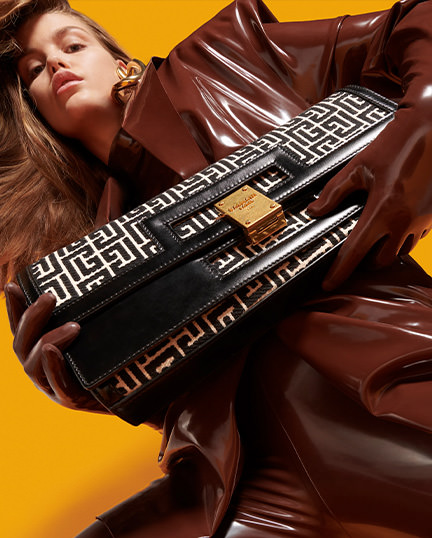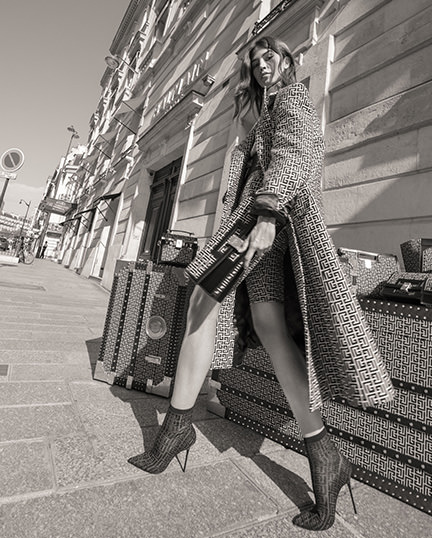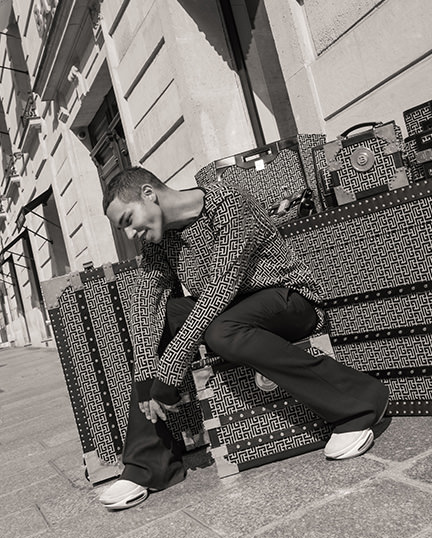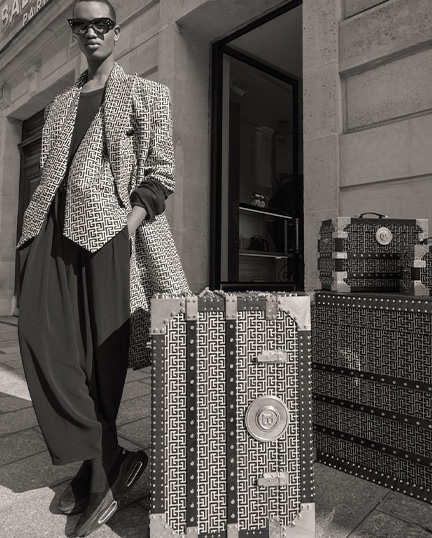A SINGULAR HERITAGE
SEASON 1, EPISODE 2 :
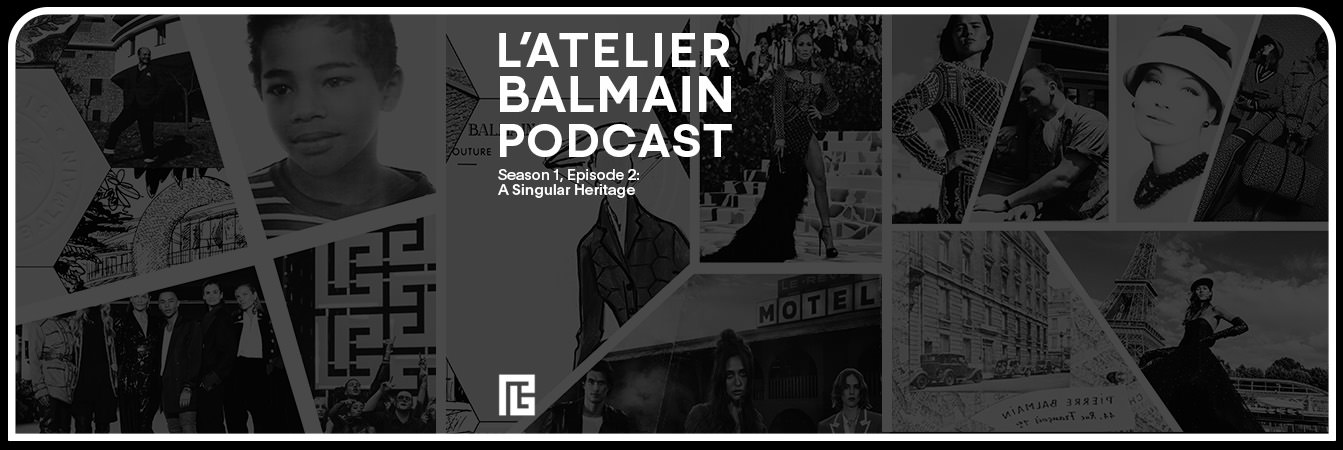
From a musical péniche gliding through the center of Paris to under-the-star runways dedicated to virtual show attendees, Olivier Rousteing has overseen a series of innovative solutions, in order to present his vision of Balmain’s distinctive optimism and heritage during 2020’s long months of lockdowns and worries. This second episode of l’Atelier Balmain explores Olivier Rousteing’s dedication to adapting Pierre Balmain impressive legacy for today’s generation.
BALMAIN-SUR-SEINE
Balmain’s July 2020 celebration of the house’s heritage could not have been more Parisian. It even took place on a quintessential Parisian mode of transport: a péniche (péniches are the enormous flat-bedded barges that have long been used to ship items through the very heart of Paris, up and down the French capital’s river, the Seine). The show’s péniche was a very special one, outfitted with a shining mirrored deck, as it carried twenty-one models, a dozen dancers, Olivier Rousteing and one of his favorite French singers, Yseult, through the heart of historic Paris, starting below the Eiffel Tower and ending up in the shadow of Notre Dame. The unique pathway of the runway was reflected in the presentation’s distinctive name: Balmain-Sur-Seine.
Socially-distanced Parisians were invited to view the runway and listen to Yseult’s incredible voice from either bank of the river, as well as from the many famous bridges that cross the Seine. It was at those beautiful bridges that other groups of dancers were posted, as well. Rousteing had worked with Beyoncé’s collaborator Andrew Makadsi and the French choreographer Jean-Charles Jousni to ensure that the show and music on Balmain’s peniche corresponded perfectly with the dancers’ performances above. And, to make the connection to the house’s heritage as complete as possible, Balmain-Sur-Seine’s models wore a mix of amazing pieces pulled from Balmain’s archives, as well as some of Olivier Rousteing’s more recent designs.
THE BALMAIN-SUR-SEINE SELECTION
For Balmain-Sur-Seine, house historian Julia Guillon highlighted the richness of Balmain’s 75-year legacy by pulling a selection of the most emblematic styles of the past from the house’s archives. Models on the péniche showed designs from house founder Pierre Balmain, as well as his successors, including gowns from Erik Mortensen and Oscar de la Renta.
1 / 7
BALMAIN'S SPRING 2021 RUNWAY
Just like this summer’s Balmain-Sur-Seine, the house’s September runway presentation turned to new tools and methods to channel a message set squarely upon Balmain’s unique legacy of daring and optimism in the face of difficult times.
Very little about the house’s September runway resembled a typical presentation. For example, since house friends, colleagues and VIPs could not attend, Rousteing and his team decided to include them digitally, filling the front rows with large screens that brought familiar faces—including Ana Wintour, Claudia Schieffer, Cara Delevingne, Jennifer Lopez and Cindy Crawford—back to Paris Fashion Week, (at least for one show).
Olivier Rousteing’s Balmain Spring 2021 presentation, which took place on special temporary stage erected inside Paris’ beautiful, 400-year-old Jardin des Plantes on the evening of September 30th held quite a few surprises.
Among them, was the show’s very unusual opening
Typically, a runway is finished when the designer walks out on the catwalk to wave a final good-bye to those attending the show. But for Balmain’s Spring 2021 runway, the presentation actually began when Olivier Rousteing seated himself on a chair in the middle of the wide stage. Around him slowly meandered Amalia, Axelle, Barbara, Charlotte, Sonia and Violeta—six models that Paris’ fashion cognoscenti remembered well from their glory days of decades past. Rousteing, working closely with the talented fashion historian Olivier Saillard, had reunited those iconic models, in order to recreate the unique ambiance of the fashion salon presentations that took place during the early years of Pierre Balmain. Until the modern version of the fashion show began in the ‘70s, Pierre Balmain — like every other Paris couture designer—would typically present his latest designs in the center of small salon spaces, usually at the Balmain headquarters, selling his latest collections directly to the clients seated around the models. In these controlled environments, the emphasis was always placed more on the client than the media, with a running commentary often explaining the detail and inspiration of each offering.
Rousteing and Saillard had decided on this nostalgic ambiance, complete with recorded quotes in English and French from Pierre Balmain, to highlight one of the central themes of the night: heritage.
THE PB LABYRINTH PATTERN
When Pierre Balmain designed the first versions of this repeating maze-like pattern 50 years ago, he seems to have been inspired by the perplexing and elegant mazes that form a part of some of France’s most beautiful Renaissance gardens. Balmain was a great admirer of the classic chateaux and gardens of France, and he named many of his couture collections for them. This clever labyrinth-inspired pattern underlines his love for the singular heritage of French savoir-faire. An earlier version of the design was first introduced in the décor of Balmain’s first Upper-East-Side boutique in 1970, and the Pierre Balmain liked it so much that he ended up covering several of the house’s men’s and women’s ready-to-wear and a host of accessories designs with the distinctive house pattern
1 / 5
1 / 3
A REBORN PATTERN
Olivier Rousteing: “Ever since way back in my teenage years, I’ve been excited by the power of conveying an identity through the strong graphics of a distinctive and well-designed monogram. So, when I first spotted how Pierre Balmain had begun sketching and developing ideas around “PB” so long ago, I was excited to see the freshness and power of those designs. From what we’ve been able to find in our archives, it appears that M Balmain’s earliest ideas for this pattern date way, way back—with some of his initial sketches showing up in papers from the early ‘60s. Even 50 and 60 years later, his ideas look so interesting and compelling—I knew right then that I needed to update the pattern, to introduce a modernized version of that labyrinth design.”
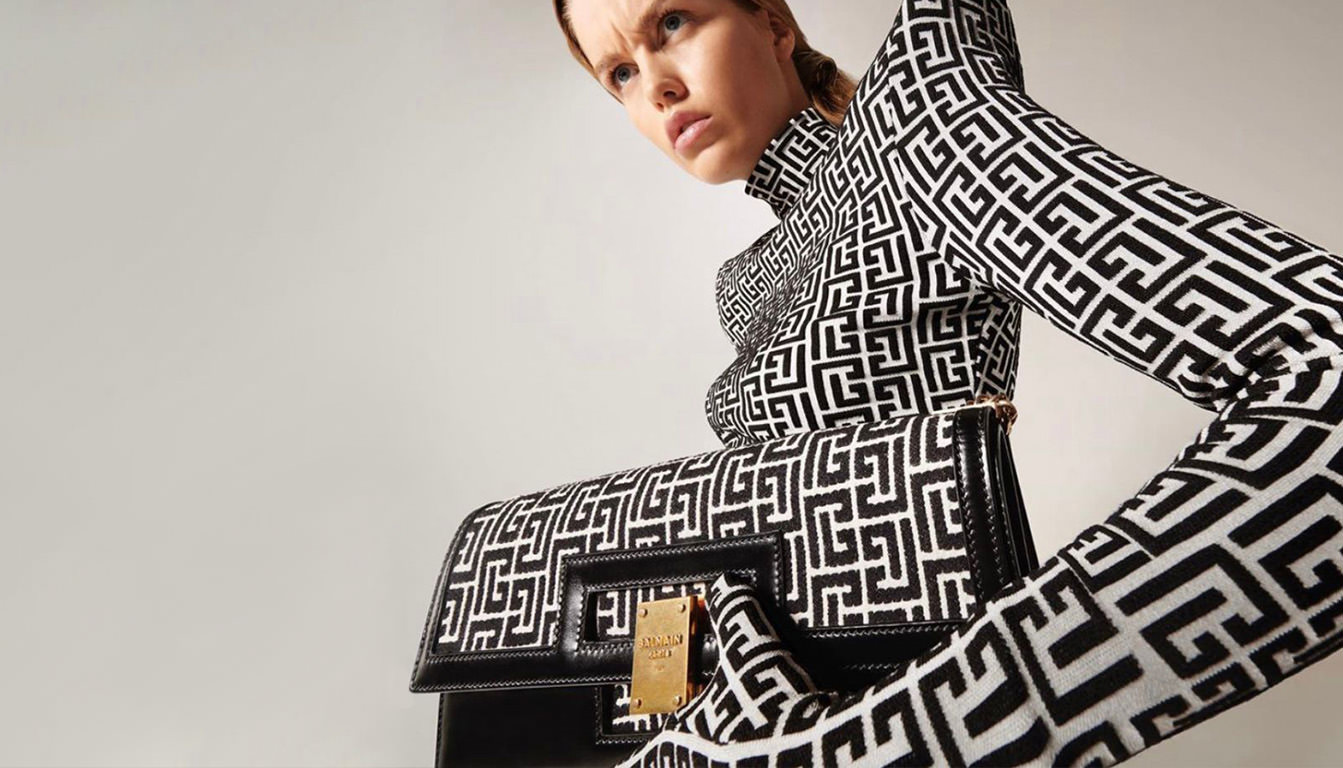
THE 1945 COLLECTION
Olivier Rousteing also turned to his accessories team to help him develop a new line of bags which would be covered with a Jacquard version of the pattern.
The new PB-patterned bags, which are part of the appropriately named 1945 Collection, rely on a super-thick, two-color, three-dimensional jacquard fabric and vintage-appearing embellishments that recall the gold medallions, gilded buttons and golden symbols that have adorned the house’s creations since Pierre Balmain’s earliest days (and which are a shared signature of the collections of both Pierre Balmain and Olivier Rousteing).
1 / 3
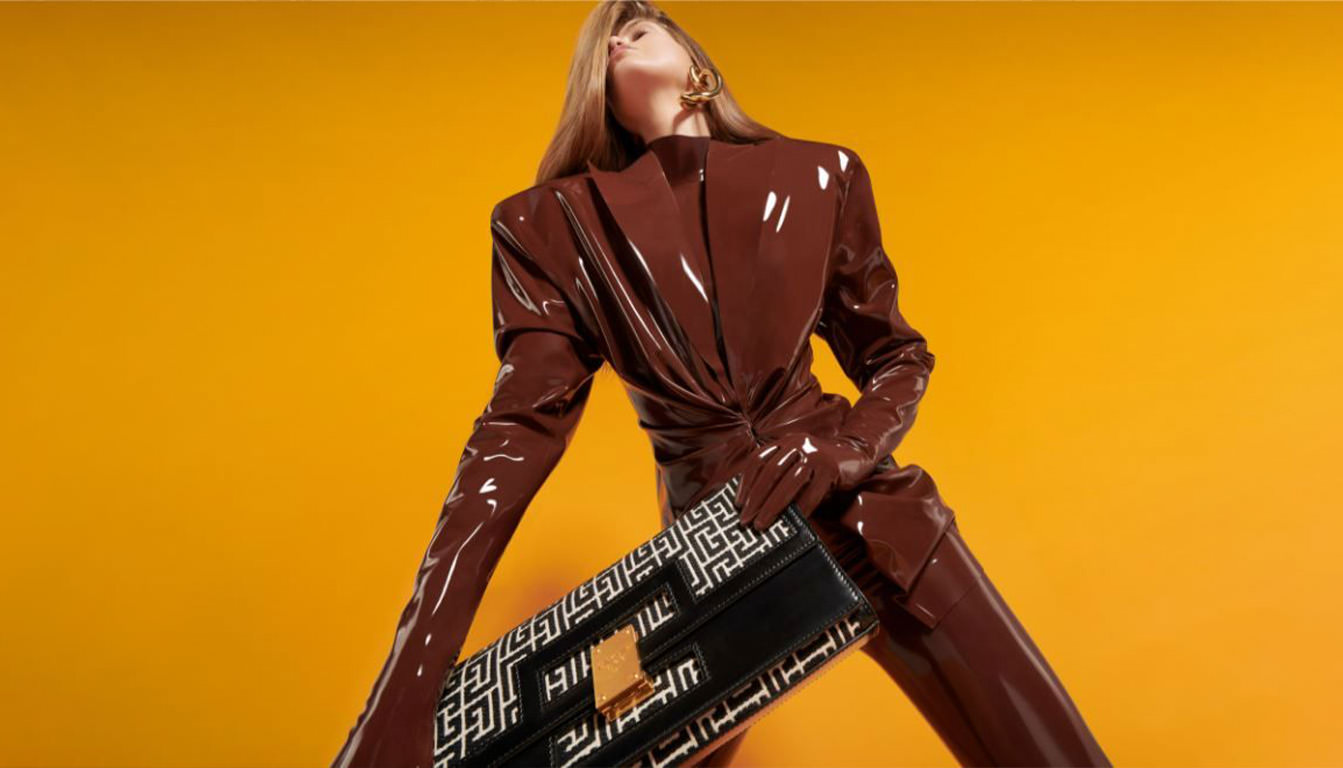
1 / 3
THE 1945 TRUNK COLLECTION
Olivier Rousteing: “Pierre Balmain’s grandfather, Alexandre Balmain had an incredible life story. He built his fortune as a 19th-Century peddler, traveling all across the central Europe with his trunk full of merchandise, selling a selection of jewelry, ribbons and hardware to French, Swiss and German customers.
Knowing that Alexandre made his fortune from his traveling sales and that he used his profits to construct the Balmain family’s impressive home in the center of St Jean de Maurienne (the small town where Pierre Balmain was later born) — well, it seemed particularly right that our newest collection would find inspiration in the beautiful trunk that Alexandre Balmain carried on his shoulders across Europe, 150 years ago.
My accessories team and I have turned to the best artisans in France and Italy for help in creating and launching Balmain’s first collection of large trunks and smaller bags—all inspired by that classic trunk of Alexandre Balmain.
For the house’s Pre-Fall 2021 collection, Olivier Rousteing continues to play with the seemingly limitless options offered by the house’s recently reintroduced PB-Labyrinth pattern.
This motif, noted Rousteing, is truly chameleon-like, perfectly adapting to every style and situation— from track to tailored suits, from clutches to cross-bodies—and as this collection designs made clear, it works particularly well when paired with contrasting-sized and/or differently colored versions, or when layered atop traditional woven patterns, including houndstooth and Prince of Wales.
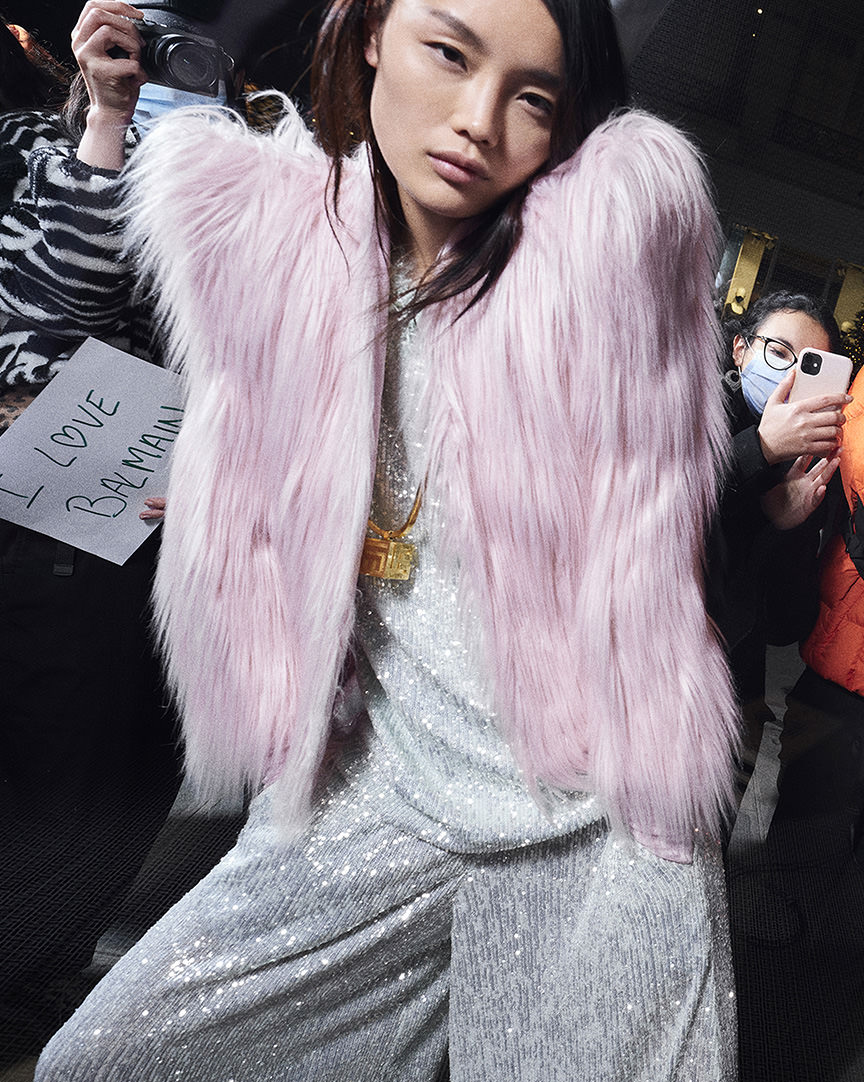
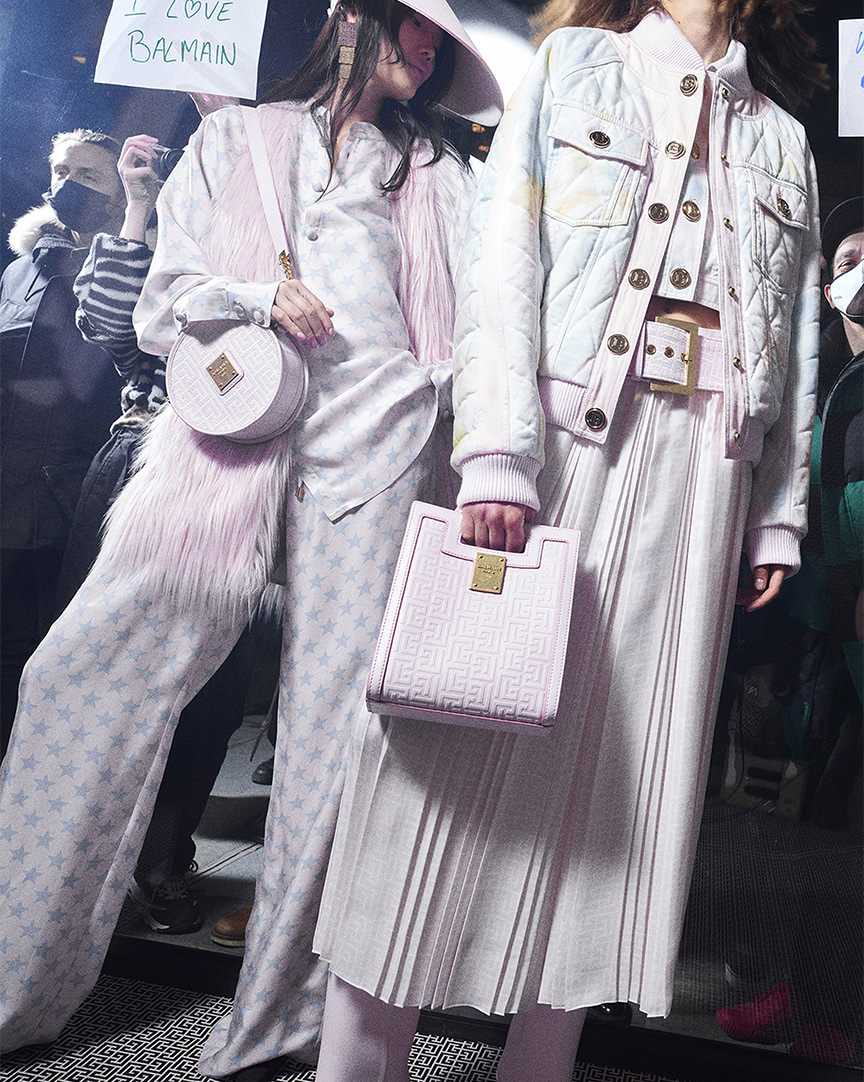
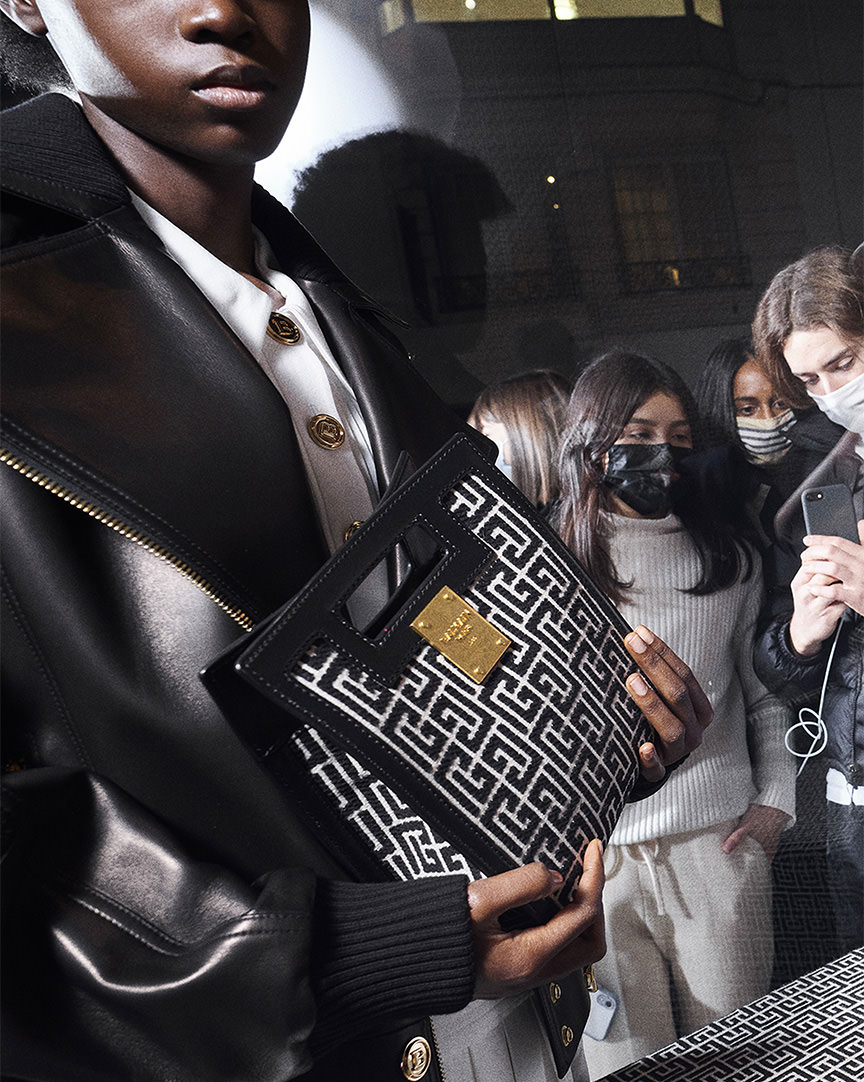

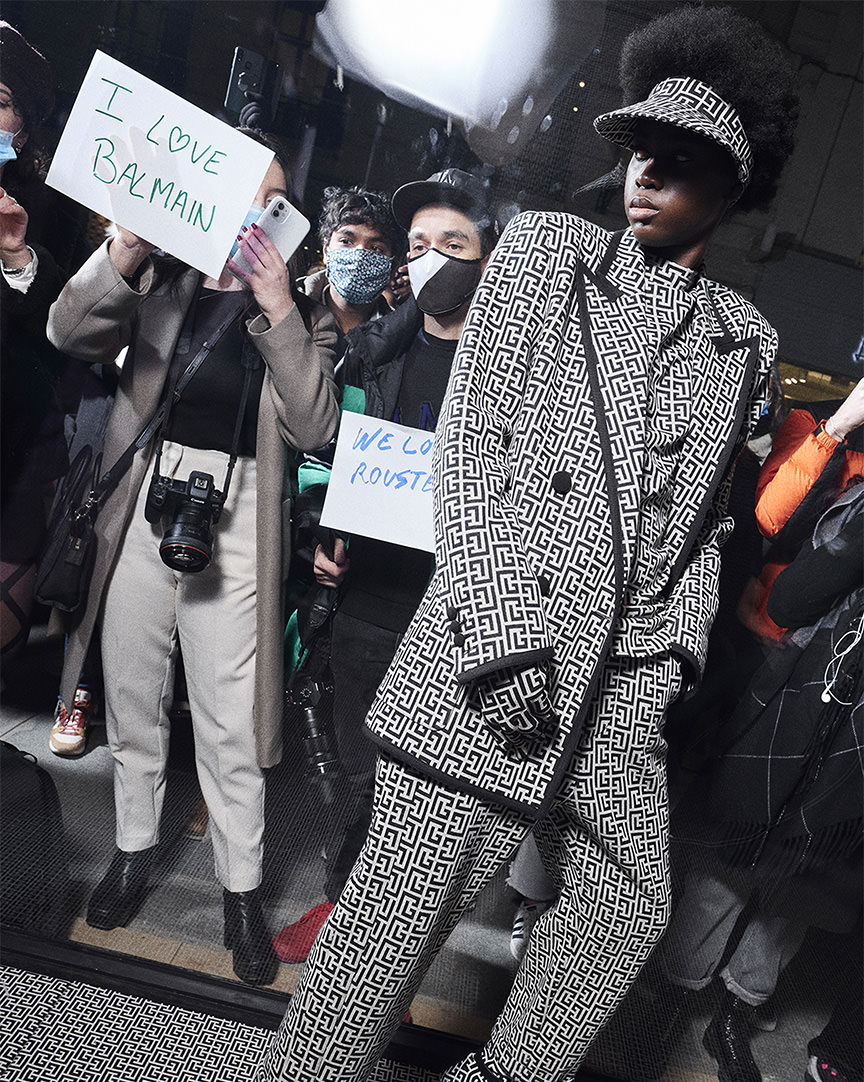

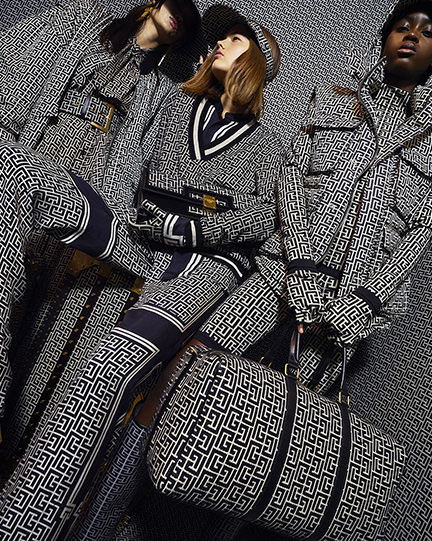
Rousteing and his design team pushed themselves to explore the many possibilities of the PB pattern—something that helped to give a sort of “Where’s Waldo” challenge to this collection. You may need to pay extra attention and look closely to spot the many small, delicate and tone-on-tone iterations of the pattern, then pull back to recognize the placement of the intertwined initials on our quilted jackets and dazzling Swarovski-embellished takes.
Echoing Pierre Balmain’s custom of shooting his designs outside the house’s original flagship, Rousteing shot the collection on the streets of Paris, (or better said, overlooking the street—setting himself and the models behind the enormous glass windows of the house’s Saint-Honoré boutique, in order to maintain the required social distancing).
NOIR BY YSEULT
In February 2021, Olivier Rousteing and the entire Balmain team were thrilled to see Yseult acclaimed as France’s best new talent of the year, during the ceremony of the Victoires de la Musique (the French equivalent of the Grammys). Seven months earlier, Yseult had cruised through a sunny Paris atop a reconfigured peniche—alongside Olivier Rousteing and his models and dancers— singing her beautiful compositions during the Balmain-Sur-Seine presentation.
Yseult is known for giving her own modern take on the classic style of the “variété française.” “I grew up listening to Edith Piaf, Barbara, Jacques Brel, Lara Fabian, Patricia Kaas,” she explained to the Guardian after her Victoires win. “The pared-down French classicism of their songs was what I always wanted my own music to be about.”
To that traditional sound, Yseult adds her strong, modern and engaged voice, calling for true racial equality and body positivism. A year ago, she released the song “Noir,” which you hear in the background of this episode. Once again beginning with the iconic voice-piano mix of French classic songs, Yseult manages to go much deeper—as she always does—celebrating her own beauty, while recalling daily struggles.
In his press release for the Balmain-Sur-Seine presentation, Olivier Rousteing discussed how 2020’s tragic events of racial violence had deeply moved him—and how he had managed to find hope in the impressive popular responses that we all witnessed—once which filled the streets both in France and America. “These renewed calls for justice and equality—heard on streets all across the world today—are in reaction to tragic losses, but their growing strength and force allow us to dream of the possibilities of long-delayed changes, pushed forward by a newly energized and impressive mix of young, determined and diverse voices.”
And Rousting’s belief that progress is possible was clearly echoed in each and every one of the songs and dances selected for the Balmain-sur-Seine moment.
Casser les codes ouais, ouais, toute ma life ouais, ouais
Tracer ma route ouais, ouais, toute ma life ouais, ouais
Noir et fière de l'être, ça, c'est toute ma life, ya, ya, ya
Tout est noir, tout est noir
Dans ma vie que tout est noir
Serrer les dents, toute ma life, tout est noir dans ma life
Serrer les dents, toute ma life
Toute ma life
Toute ma life
Toute ma life
Break the codes yeah, yeah, all my life yeah, yeah
Make my way yeah, yeah, all my life yeah, yeah
Black and proud of it, that's my whole life, ya, ya, ya
Everything is black, everything is black
In my life that everything is black
Grit my teeth, all my life, everything is black in my life
Grit my teeth, all my life
All my life
All my life
All my life
Video Credits:
01 : Video of Balmain-Sur-Seine Courtesy of Balmain, ©Balmain, All Rights Reserved- 02 : Video of Balmain Spring 2021 Runway. ©Balmain. All Rights Reserved
Photo Credits:
03 : ©Patrimoine Balmain, All Rights Reserved- 04 : ©Balmain, All Rights Reserved
Credits :
Balmain Creative Director: Olivier Rousteing- Music: “Noir” by Yseult
- Artists—Composers of “Noir”: Yseult, Ziggy Franzen, Romain Descampe
- Label: Believe Music (on behalf of Naïve /Y.Y.Y.); Sony ATV Publishing and 1 Music Rights Societies
- Additional Podcast Episode Music: Jean-Michel Derain
- Episode Direction and Production: Seb Lascoux
- Balmain Historian: Julia Guillon
- Episode Coordination: Alya Nazaraly
- Research Assistance: Fatoumata Conte and Pénélope André
- Digital Coordination/Graphic Identity: Jeremy Mace
- Episode researched, written and presented by John Gilligan
To explore further:
Pierre Balmain’s Autobiography: My Years and Seasons, Doubleday, 1965
